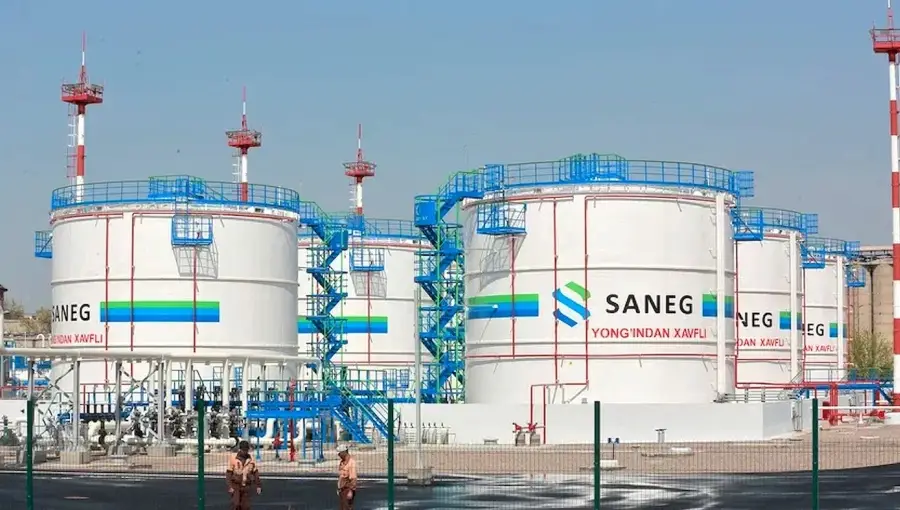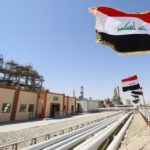Uzbekistan’s Oil and Gas Companies Drive Growth Amid Reforms and Global Market Shifts

Uzbekistan’s Oil and Gas Companies Drive Growth Amid Reforms and Global Market Shifts in 2025
Tashkent, Uzbekistan
Uzbekistan’s oil and gas industry, a vital pillar of the nation’s economy, is undergoing a transformative phase in 2025, with state-owned Uzbekneftegaz and international partners like Lukoil, CNPC, and MOL Group leading ambitious expansion efforts. Bolstered by government reforms and strategic investments, these companies are capitalizing on the country’s vast natural gas reserves while navigating global oversupply risks and the energy transition. Recent developments highlight how Uzbekistan’s energy firms are positioning themselves for growth in a dynamic market.
Production and Exploration Expansion
Uzbekistan’s oil and gas sector is projected to grow at a compound annual growth rate (CAGR) of 4.0% from 2025 to 2033, driven by active exploration and production, according to DataInsightsMarket. Uzbekneftegaz, the dominant player, is spearheading development in key fields like Galkynysh, one of Central Asia’s largest natural gas reserves, producing 1.5 trillion cubic meters annually. In 2025, the country’s oil production is expected to stabilize at 150,000 barrels per day (b/d), while natural gas output reaches 50 billion cubic meters, supporting domestic energy needs and exports to China and Russia. The government’s $33 billion investment plan, announced in 2019, continues to fund 30 new oil and gas projects, with 52 natural gas processing initiatives worth $9 billion set to be completed by the end of 2025.
Strategic International Partnerships
International companies are playing a critical role in modernizing Uzbekistan’s energy sector. Russia’s Lukoil is investing $1.2 billion in the Kandym gas field, boosting output by 10% in 2025, while China’s CNPC is expanding operations in the Bukhara-Khiva region, targeting 200 million cubic feet per day of additional gas production. Hungary’s MOL Group has entered joint ventures with Uzbekneftegaz, focusing on enhanced oil recovery in mature fields, achieving a 5% production increase in 2024. These partnerships are vital for accessing advanced technologies and capital, as Uzbekistan seeks to improve recovery rates, currently at 20% for oil fields, compared to the global average of 30–40%.
Infrastructure Modernization Efforts
Uzbekistan’s midstream and downstream segments are seeing significant upgrades. Uzbekneftegaz is investing $2 billion in 2025 to modernize the Central Asia–China gas pipeline and domestic transmission networks, enhancing export capacity to 15 billion cubic meters annually. The Uzbekistan GTL plant, a flagship downstream project, is ramping up production of synthetic fuels, targeting 1.5 million metric tons per year by 2026. However, aging infrastructure and metering system inefficiencies remain challenges, with 10% of gas production lost to leaks and inefficiencies in 2024. Digital technologies, including IoT-enabled monitoring, have reduced losses by 3% at select facilities.
Geopolitical and Market Dynamics
Global market trends are impacting Uzbekistan, with a projected oil surplus of 1.7 million barrels per day by early 2026 pushing Brent crude prices down to $50 per barrel from $68 in August 2025. As a net oil importer, Uzbekistan is less exposed to crude price volatility but faces challenges in securing affordable imports. The country’s gas exports, primarily to China via the Central Asia–China pipeline, are under pressure from a potential global LNG glut starting in 2026, which could lower gas prices. Geopolitical stability in Central Asia, bolstered by Uzbekistan’s role in regional energy trade, supports its ambition to become a transit hub, though tensions in neighboring regions like the Strait of Hormuz pose indirect risks.
Energy Transition and Sustainability
Uzbekistan is taking steps toward sustainability, driven by government reforms and international pressure. Uzbekneftegaz is piloting carbon capture, utilization, and storage (CCUS) at the Fergana refinery, aiming to capture 500,000 metric tons of CO2 annually by 2028. The government’s renewable energy push includes 5 gigawatts of solar and wind projects by 2030, with Lukoil contributing $200 million to a solar plant in Bukhara. However, only 35% of industry executives surveyed in 2025 prioritize low-carbon investments, citing high costs and limited infrastructure as barriers. Natural gas, accounting for 85% of Uzbekistan’s energy mix, remains a transitional fuel, supporting power generation and industrial growth.
Petrochemical Sector Growth
The petrochemical industry is a key growth area, with demand for natural gas liquids (NGLs) projected to drive 18–20% of global oil demand by 2040. The Uzbekistan GTL plant and the Bukhara refinery are expanding petrochemical output, targeting 1 million metric tons of polymers annually by 2027. CNPC’s investment in a new chemical complex in the Ustyurt region is expected to produce 800,000 metric tons of ethylene per year, strengthening Uzbekistan’s export capabilities. AI-driven process optimization has reduced production costs by 7% at these facilities in 2024, enhancing competitiveness against Middle Eastern producers.
Workforce and Industry Consolidation
Workforce challenges are emerging, with 1,500 jobs cut in 2024–2025 as companies streamline operations amid global price pressures. Uzbekneftegaz is countering this by training 1,000 workers for roles in renewable energy and digital operations, supported by government programs. Mergers and acquisitions are on the rise, with 50% of Uzbek oil and gas firms planning deals in 2025 to access technology and expand reserves, according to NexaReports. MOL Group’s $300 million acquisition of a stake in the Surkhandarya field exemplifies this trend.
Outlook for 2025
Uzbekistan’s oil and gas companies are poised for growth, driven by government reforms, international partnerships, and infrastructure investments. However, global oversupply risks, infrastructure challenges, and the energy transition pose significant hurdles. As Uzbekneftegaz and its partners leverage technology and sustainability initiatives, Uzbekistan’s role as a Central Asian energy hub will depend on its ability to navigate these dynamics through 2030.
- Oil Industry







